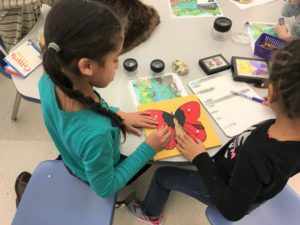
The Hudson River Estuary Program announced a new Hudson River Curriculum Guide, featuring original lessons from the Estuary Program and its partners. The inquiry-based, multi-component science guide is designed for teachers and students to enhance STEM learning, as well as deepen their engagement and understanding of the Hudson River and its watershed.
“The Hudson River curriculum guide has something for everyone,” said Rebecca Houser, education and outreach specialist at the Hudson River Estuary Program, who spearheaded the project. “The lessons are designed so that students build key ideas and understanding of events and phenomena over time, and spark curiosity for the world around them. The units are creative, hands-on and can be adaptable to the individual needs of students in the classroom or in the field.”
The guide offers six thematic units: estuaries, water and watersheds, climate and weather, interdependence in ecosystems, American eels, and human impacts, benefits and solutions. Each interdisciplinary unit is arranged by topic, and each topic includes lessons for elementary, middle, and high school levels. The units are designed to engage diverse learning styles, introduce students to the big ideas in science, expand their knowledge of environmental issues, and help them connect to the natural world around them.

Teachers may complete all the lessons in each unit or choose those that best fit their needs, whether in the classroom, remotely, or in the field. Every lesson has been reviewed by classroom teachers and other curriculum specialists to ensure alignment with grade level learning standards.
The New York State Department of Environmental Conservation’s Hudson River Estuary Program is a NEIWPCC program partner.
Want to learn more about the Hudson River?
Explore “The State of the Hudson 2020” for status and trends in water quality and more, or the “2021-2025 Hudson River Estuary Action Agenda” to learn about conservation and restoration goals.